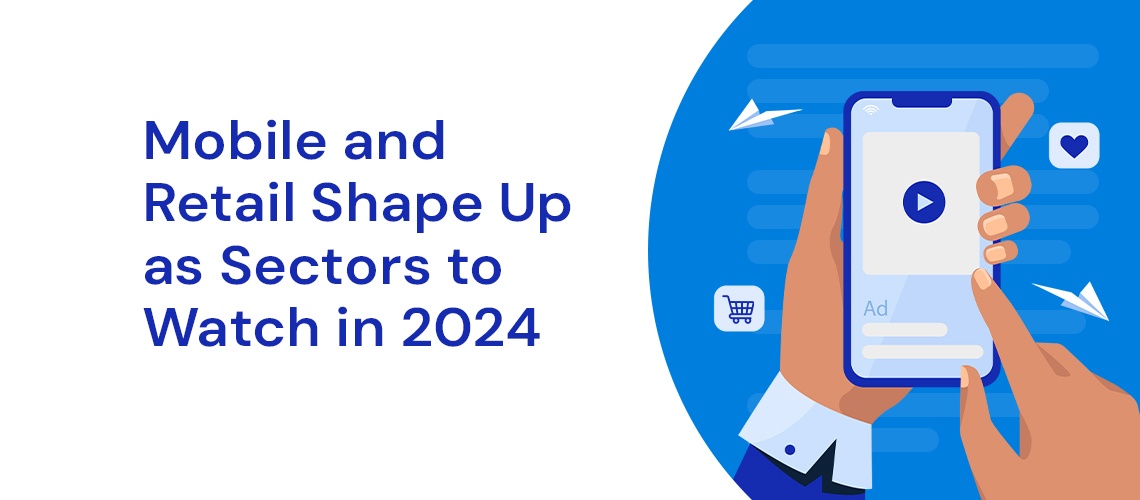
Mobile and Retail Shape Up as Sectors to Watch in 2024
January 23, 2024
AdTech Leaders See Digital at a Pivot Point
March 11, 2024
Omnicom last month dropped $835M on Flywheel, the biggest deal the ad holding company has ever done – for a company with $300M in revenue. Which signals retail media and commerce media more broadly is disrupting the traditional agency business model as much as it is the traditional media owner model.
Another big signal is Amazon’s latest results. In February the eCom giant’s Q4 financials again underlined the rate of transfer from other media: Amazon’s ad business in calendar 2023 stood at $46.9B, up 27% year on year and is still growing much faster than any other part of its business. In 2015, Amazon posted $1B in what were then described as ‘other’ revenues. At that run rate, it will quickly break $50B would stand closer to $60B for calendar 2024.
Agencies reconfigure

The rise of retail media is well documented – and the big ad buying groups have made major investments in recent years as they vie to carve out a share of the spoils.
Publicis Groupe CEO Arthur Sadoun was blunt about where he sees the money headed. “This acquisition will give Publicis a strong competitive advantage in a channel that by 2025 should surpass traditional TV spend,” he said after reportedly paying north of AUD$200M for Australian-founded retail media platform Citrus Ad in 2021.
The group followed up the following year with a similar sized deal for shopper intelligence business Profitero, and last June rolled out a retail media product suite based on the platform in a bid to help brands better navigate a slew of disparate retail media networks. There are upwards of 60 major networks in the US alone, and tonnes of smaller ones popping up all the time. Profitero CEO Bryan Wiener underlined the group’s intent to move upstream, beyond retail performance, i.e. search, and into brand channels: “This is not just for search in retail, but off-site on CTV or in-store, really where the future of retail media is going.”
IPG made a similar move the following month, launching a dedicated retail media business and Unified Retail Media Solution, with GroupM hot on its heels in adding retail media buying capability to its Fusion platform last August. As JiYoung Kim, president of GroupM’s performance business Nexus put it, “Retail media is forcing media agencies to really rethink the business that we’re in”.
Hence Omnicom’s big bet. But the broader commerce aspect will ultimately eclipse the retail media subsect, according to Nick Manning, a former media agency boss who sold the London agency he founded to… Omnicom.
“There is no question that retail media is a very important layer within the new marketing mix, but the transformation of digital commerce by Amazon and its Chinese peers will become a much bigger story,” per Manning.
That’s because commerce touches every part of the marketing world – with eCom traffic feeding marketplace traffic feeding loyalty programs feeding data feeding insights feeding retail media and back into eCom, where the ‘flywheel’ keeps turning. The impacts, said Manning, are profound across brand, product, distribution, fulfilment, CRM, search, social, analytics, influencer and media.
“We are witnessing the full-scale emergence of a new way to drive business and new marketing models, and this will have a profound influence on the marketing services industry and thus the agency world.
“It is advertising, Jim, but not as we know it; it will affect the flow of promotional budgets and who gets to handle them.”
AdTech impacts
The adtech supply chain has spent the last few years plotting how to best position for retail and commerce media’s dominance – and for some it seems to be starting to pay off.
Criteo this month posted retail media revenues for 2023 of $203M excluding traffic acquisition costs. Commerce audience targeting revenues were up 42% for the year, a decent chunk of which, circa $10M in Q4 alone, per CEO Megan Clarken, came from advertisers pushing retargeting budgets into commerce. “And we do continue to expect a shift from retargeting to commerce audience more broadly,” she told analysts on the Q4 earnings call.
Criteo is forecasting another 20% growth curve for retail media in 2024 – even though its single largest client is taking a chunk of that business direct from Q2. Without that contract change, the firm would be aiming higher, per CFO Sarah Glickman.
“Our [2024 gross] expectation is 30% versus kind of a 12% expectation from the market,” she told the same analysts call. But she hedged her bets. “That does assume that all of our clients are continuing to grow and expand quite considerably. So I would say it is not a conservative expectation.”
CTV next mover?

Other ad tech firms are anticipating a bump from retail media as advertisers aim to use shopper data to target potential buyers offsite, i.e. outside of retailers’ owned environments like their websites and apps.
As that moves money up the funnel, TV networks are also hoping to offset declining revenues by riding a wave of retail media-powered CTV ads. Some retailer media businesses – such as Australia’s biggest player Cartology, owned by Woolworths, the country’s largest supermarket – believe that potential upside for TV networks has been overlooked by analysts sizing the negative earnings impacts for traditional media.
But while the likes of Profitero’s Wiener are backing a combination of offsite and CTV ads as retailer media’s “future”, Criteo boss Megan Clarken thinks it could be a while before retail media-powered CTV money moves en masse.
“There's a little ways to go until [CTV] becomes a true retail media proposition,” she told analysts in February. But in terms of targeting and finding … audiences on that environment, yes, it's an opportunity.”
